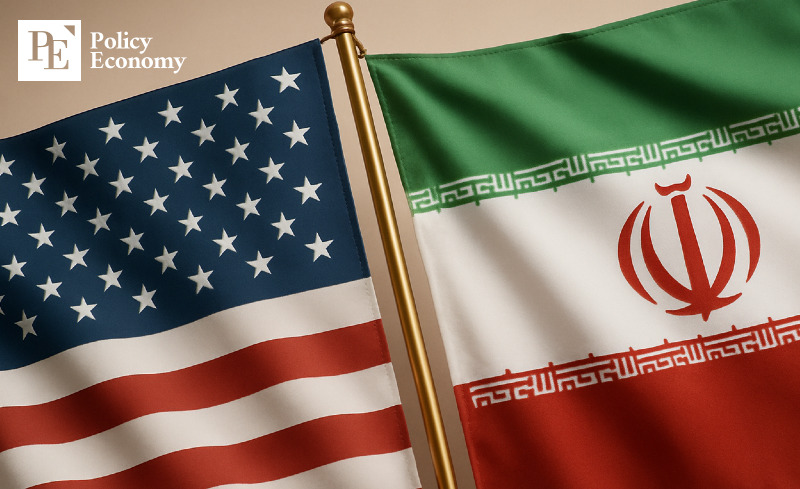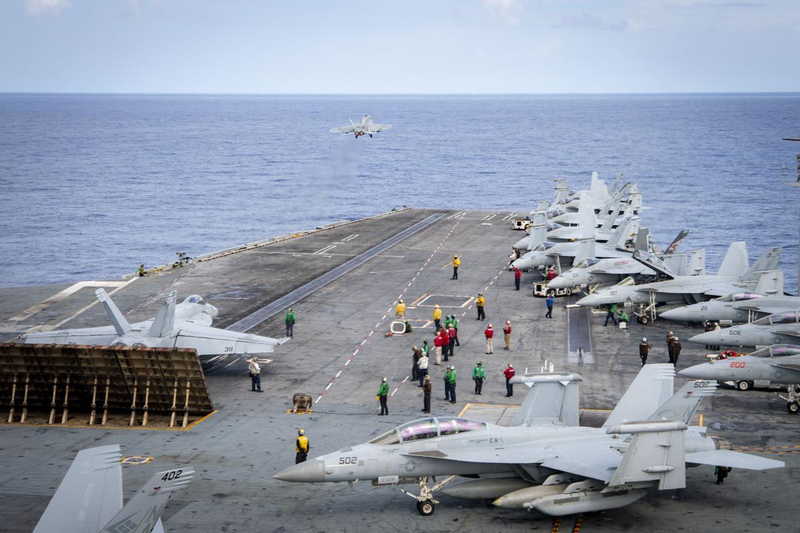Trump in 'Cautious Mode' Over Iranian Nuclear Facility Strike — Aiming for a 'Killing with a Borrowed Knife' via Israel?
Input
Modified
Trump Begins Nuclear Talks Early in His Second Term Hardline Shift Following Israeli Strikes U.S. Military Involvement Pressures Iran to Accept Demands

As tensions in the Middle East edge dangerously toward open conflict, President Donald Trump finds himself at the heart of a high-stakes geopolitical chess match. The White House has reportedly approved detailed military plans targeting Iran’s nuclear infrastructure, yet the final order remains conspicuously unsigned. Behind this hesitation lies a finely calibrated calculation: how to neutralize Iran’s nuclear threat without plunging the region—and possibly the world—into uncontrollable chaos.
This posture, described by insiders as Trump’s “cautious mode,” reflects not indecision but a deliberate attempt to avoid repeating the devastating aftermath of past U.S. interventions in the region. Rather than seeking regime change at any cost, Washington appears to be maneuvering Iran toward a strategic retreat—possibly through Israel's actions—without stepping into the fire itself. In military strategy, this is reminiscent of the ancient Chinese tactic of “killing with a borrowed knife,” letting another party do the bleeding.
Strategic Ambiguity and the Shadow of War
On June 18, as the world speculated on a widening conflict, President Trump held court in the White House Oval Office with players from Juventus, Italy’s storied football club. But questions from reporters quickly shifted the mood. Would the U.S. join Israel in striking Iran? Trump offered only ambiguity. “I have thoughts about what I would do,” he said cryptically. “I’d like to make my final decision one second before the deadline, because things change. Especially in war, things change even more.”
Earlier that day, he had already floated the possibility that the U.S. “might or might not” act against Iran—a statement that appeared carefully crafted to maintain strategic flexibility. While emphasizing that he does not actively seek war, Trump made one thing clear: “If it’s a choice between conflict and Iran possessing nuclear weapons, then we have to do what must be done.”
Reporters pressed him on whether the regime of Supreme Leader Ayatollah Ali Khamenei could fall under the pressure. Trump’s reply—“Of course. Anything can happen.”—betrayed both confidence and volatility. He reiterated his stance that Iran must never become a nuclear power and declared that Tehran was now only “weeks away” from achieving that capability. The clock, it seems, is ticking.

From Talks to Tactics: A Shift Toward Military Calculations
Trump’s first term saw the unraveling of the Obama-era nuclear deal with Iran, and since returning to office, he has worked to revive negotiations—believing a new agreement could serve as both a legacy-defining win and a means of restoring regional stability. But despite intensive diplomacy, talks stalled amid unyielding disagreements. That impasse took a violent turn on June 13 when Israel executed a sweeping and coordinated strike against dozens of Iranian nuclear and military facilities.
The Israeli escalation upended Washington’s diplomatic momentum. On June 16, Trump left the G7 summit in Kananaskis, Canada, in haste—an unambiguous signal that U.S. foreign policy was pivoting. For many observers, it marked a turning point: diplomacy with Iran may have reached its expiration date.
Reports from The New York Times and other major outlets confirmed that Israeli Prime Minister Benjamin Netanyahu had been lobbying Trump behind the scenes for months. Netanyahu’s message was urgent: a full-scale military strike must precede Iran’s acquisition of rapid nuclear weapons capability. Diplomacy, he argued, would only work if backed by overwhelming force.
Initially, Trump resisted. Just weeks prior, he reportedly opposed Netanyahu’s proposal to target Ayatollah Khamenei directly—warning that assassinating the spiritual leader could spiral into regional war. But by June 8, his tone had shifted. When CIA Director John Ratcliffe briefed Trump on a likely Israeli operation, the president did not push back. His prior restraint had weakened.
Instead of joining Israel’s campaign outright, Trump chose a calibrated middle ground: offer minimal U.S. support, stand back publicly, and let the military consequences play out. Five days after the briefing, Israel struck Iran hard, eliminating key military commanders including Hossein Salami, chief of the elite Revolutionary Guard Corps.
Faced with this dramatic escalation, Trump saw what many in his camp now call a “golden opportunity.” The stalled nuclear talks could be forced back into motion—this time under the shadow of firepower. Trump’s administration quickly revived its “maximum pressure” doctrine, seeking to compel Iranian concessions without destabilizing the entire region.
Iranian Regime Teeters as Israeli Pressure Mounts
Trump’s ideal scenario is clear: force Iran to abandon its nuclear ambitions, but avoid toppling the regime outright. A collapsed Iran could create a regional vacuum akin to the one left by Saddam Hussein’s fall in Iraq—one of the costliest U.S. miscalculations in modern history. The lesson was brutal and lasting: removing a regime without a post-war plan invites chaos, extremism, and long-term strategic loss.
Thus, Washington appears to be designing conditions that allow Iran to concede without losing face. But Israel’s actions may be pushing events too far, too fast.
Since June 14, Israel has expanded its offensive beyond military sites to energy infrastructure—gas fields, refineries, and industrial depots. The psychological toll inside Iran has been staggering. According to The Telegraph, Tehran has descended into disarray: mysterious sewer line explosions sent waste gushing into streets, drones triggered explosions in city traffic, and highways became clogged with vehicles as residents fled. The capital was in panic, and the imagery—streets flooded with sewage, cars ablaze—underscored the operation’s effectiveness and brutality.
Supreme Leader Khamenei reportedly fled to a secure underground bunker northeast of Tehran shortly after the strikes began. His disappearance, as citizens reeled from the violence, fueled speculation that the regime was crumbling. Foreign media outlets now widely agree: the Islamic Republic is facing its most serious crisis since the 1979 revolution.
Even Iran’s rhetoric is shifting. Foreign Minister Abbas Araghchi suggested that if Israel ceased its attacks, Iran would halt retaliation. Analysts interpret this as a rare sign of desperation. At the same time, Iran’s key proxies—Hamas in Gaza, Hezbollah in Lebanon, and the Houthis in Yemen—appear destabilized and ineffective, their networks fractured.
Domestically, dissent continues to rise. Ongoing protests against the mandatory hijab law have grown into broader gender and generational uprisings. The state is losing its grip not just geopolitically, but from within. The cracks are widening.
Trump, it seems, is watching all this unfold without directly firing a shot. Whether this strategy will lead to a renewed agreement or uncontrollable collapse remains uncertain. But by outsourcing the military offensive to Israel and exerting pressure at arm’s length, Trump has pushed Iran into a corner—perhaps fatally.
As the world waits for his final decision, the president remains deliberately ambiguous. A strike could still come. Or not. In Trump’s own words, “I’d like to make my final decision one second before the deadline.”
Until that moment arrives, Iran, Israel, and the rest of the world will be holding their breath.





















